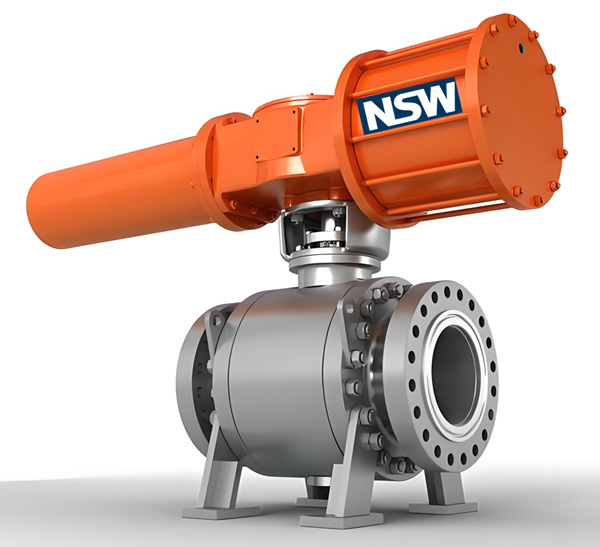What is a Pneumatic Actuator Ball Valve
A pneumatic actuator ball valve is a critical flow control device that combines a ball valve with a pneumatic actuator to automate the regulation of liquids, gases, or steam in industrial systems. This article explains its components, types, advantages, and how it differs from other valve types.
What is a Pneumatic Actuator
A pneumatic actuator is a mechanical device that uses compressed air to generate motion for operating valves. Key features include:
- Operation: Converts air pressure (typically 4–7 bar) into rotary or linear motion.
- Components: Cylinder, piston, gears, and springs.
- Types:
– Double-acting pneumatic actuators: Require air pressure to open and close
- Spring Return pneumatic actuators: Use air for one action and a spring for the other (fail-safe design).
Pneumatic actuators are valued for their speed, reliability, and suitability in explosive or high-temperature environments.

What is a Ball Valve
A ball valve controls flow using a rotating ball with a bore (hole) through its center. When aligned with the pipeline, it allows flow; when rotated 90 degrees, it blocks flow. Key traits:
- Design: Robust, full-bore or reduced-bore options.
- Sealing: Tight shut-off with PTFE or metal seats.
- Durability: Ideal for high-pressure and high-temperature applications.
Types of Pneumatic Actuator Ball Valves
Pneumatic ball valves are categorized by design and function:
1. By Valve Structure:
– Full-port ball valve: Bore matches pipe diameter for minimal flow resistance.
– Reduced-port ball valve: Smaller bore for higher flow control precision.
– V-port ball valve: V-shaped bore for precise throttling.
2. By Actuation:
– Double-acting: Requires air supply for both opening and closing.
– Spring-return: Automatically returns to a safe position on air loss.
Advantages of Pneumatic Actuator Ball Valves
1. Excellent Sealing: Bubble-tight shutoff, even under high pressure.
2. Fast Operation: 90-degree rotation enables quick open/close cycles.
3. Low Maintenance: Simple design with fewer wear-prone parts.
4. Versatility: Compatible with aggressive media (acids, gases, steam).
5. Long Service Life: Resistant to corrosion and high temperatures.
Pneumatic Actuator Ball Valve vs. Other Valves
| Valve Type | Key Differences |
| Pneumatic Butterfly Valve | Lighter and cheaper but less effective for high-pressure sealing. |
| Pneumatic Gate Valve | Slower operation; suited for full flow, not throttling. |
| Pneumatic Globe Valve | Better for precise throttling but higher pressure drop and complex structure. |
| ESDV (Emergency Shutdown Valve) | Prioritizes rapid safety shutdowns; often paired with gate/ball valves. |
Applications of Pneumatic Actuator Ball Valves
1. Oil & Gas: Shutoff and control in pipelines, refineries, and LNG plants.
2. Chemical Processing: Handle corrosive fluids and high-purity media.
3. Water Treatment: Manage potable water, wastewater, and irrigation systems.
4. Power Generation: Regulate steam and cooling water in turbines.
5. Pharmaceuticals: Sanitary designs for sterile fluid handling.
Conclusion
Pneumatic actuator ball valves excel in high-pressure, high-temperature, and corrosive environments, offering unmatched sealing and reliability. Their adaptability across industries makes them a cornerstone of modern flow control systems.
Post time: Mar-31-2025

